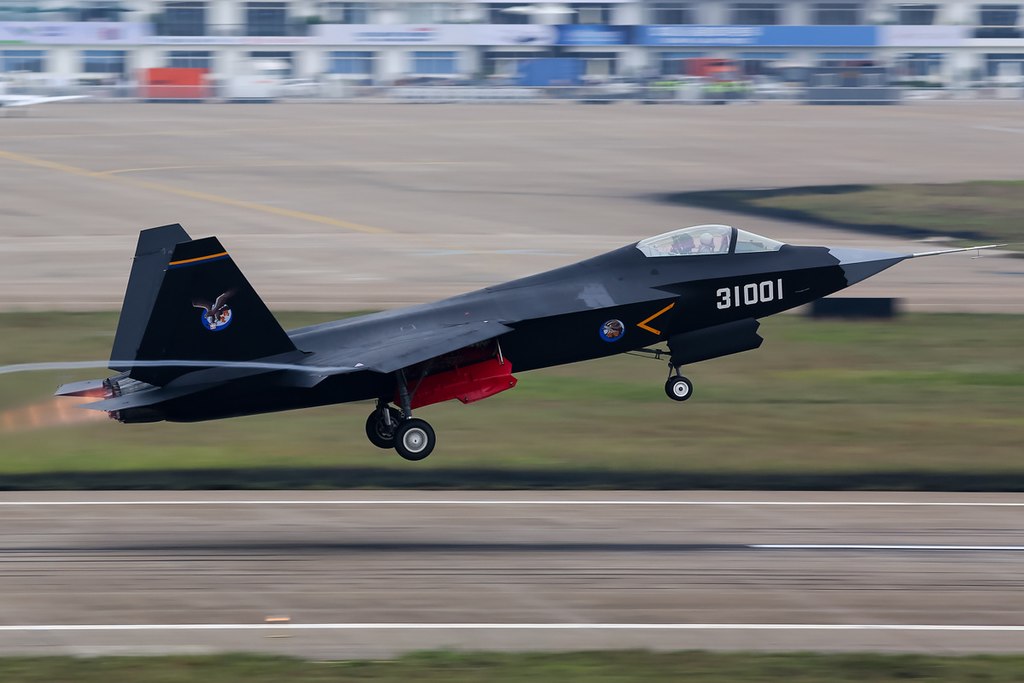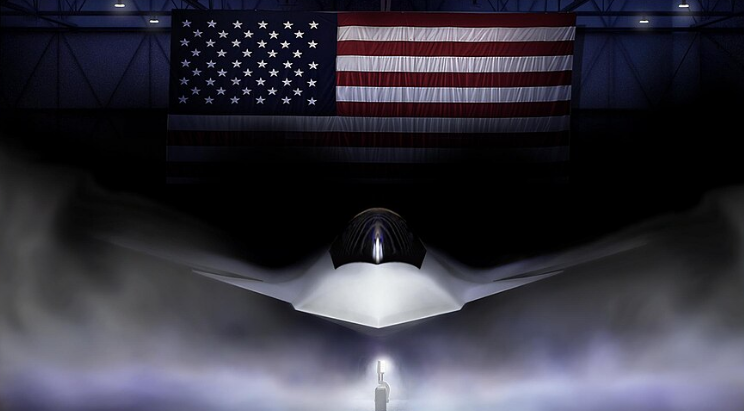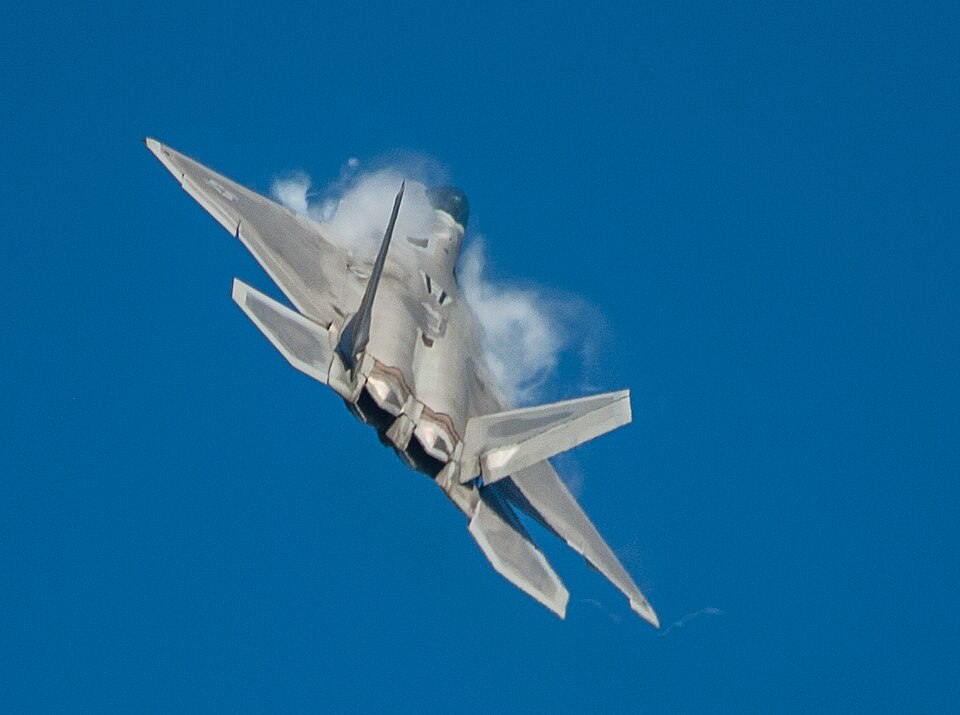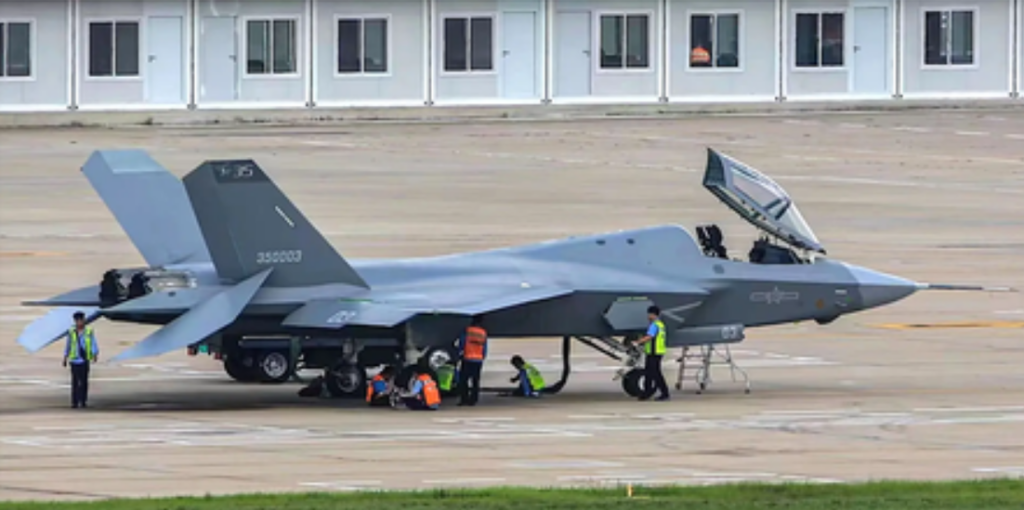
The emergence of China’s carrier-launched J-35, and two different sixth-generation prototypes-the J-36 and J-50-represents a critical juncture in the Indo-Pacific’s aerial balance. Until recently, the PLAAF had lacked any meaningful capability to project fifth-generation stealth power from the sea-a disparity the United States and its allies have been exploiting. That gap is closing fast.
What makes this development more consequential is not simply the aircraft themselves but the pace and scale at which Beijing appears able to produce them. Through military-civil fusion, China has shown the ability to double or triple fleet sizes in just a few short years-a feat unmatched in the West. This list distills the most critical aspects of China’s stealth fighter surge-technical, industrial, and strategic-that defense watchers must track closely.

1. J-35: Closing the Carrier-Borne Stealth Gap
The J-35’s combat debut finally gives the PLA a carrier-borne stealth fighter comparable in role to the U.S. Navy’s F-35C and Marine Corps’ F-35B. With a top speed near Mach 1.8 and a combat radius approaching 785 nautical miles, it matches much of the F-35’s reach. Yet the decisive question lies in whether it can achieve advanced sensor fusionintegrating radar, infrared, and electronic signals into a single tactical picture. Without that, U.S. and allied forces retain a detection and targeting edge. The J-35 externally resembles the F-35, reflecting likely past cyber theft of design data. Internally, its Guizhou WS-19 engines and avionics are still unproven in sustained maritime operations. If produced in large numbers quickly, the J-35 would erode the U.S. advantage in carrier strike capability across the Pacific.

2. J-36: Triple-Engine Sixth-Generation Ambition
The J-36, with its tailless delta-wing design and triple-engine configuration, suggests a heavy fighter-bomber type optimized for long-range strike. Recent prototypes come with angular thrust-vectoring exhausts replacing the original recessed nozzles in an apparent effort to increase stability and maneuverability in an inherently unstable tailless design. Divertless supersonic inlets are another stealth-enhancing modification made to the aircraft. The redesigns of the landing gear and refinements to the intake hint at a fast iterative cycle of development. Analysts note that such rapid changes, within ten months of the first public reveal, underline a push to close the gap with U.S. sixth-generation programs, targeting operational readiness possibly by 2031.

3. J-50: Agile, Tailless Tactical Fighter
The J-50, sometimes referred to as J-XDS, is the Shenyang Aircraft Corporation’s entry into sixth-generation competition. Distinctive swiveling wingtips, F-22-style thrust-vectoring nozzles, and a diverterless intake design speak to high agility and survivability in high-threat environments. Absence of vertical tails reduces the radar signature, while embedded apertures hint at a distributed aperture system. Paired with the heavier J-36, the J-50 could form part of a complementary fleet deep-strike platforms alongside tactical penetrators. Reports suggest that both designs flew in late 2024a testament to China’s ability to field multiple advanced prototypes in parallel.

4. Electromagnetic Catapults on Fujian
China’s Type 003 Fujian carrier introduces electromagnetic aircraft launch systems, or EMALS, allowing for heavier launch weights and faster sortie generation. In this way, catapult launches make the J-35 the first stealth fighter to ever fly via EMALSsomething even the U.S. Navy’s F-35C does not currently do. The EMALS provides finely differentiated launch profiles for a range of aircraft, from the large early-warning planes like the KJ-600 to lighter drones. While the U.S. Ford-class carriers faced years of technical challenges with EMALS, Fujian’s integration of new aircraft types alongside the system signals confidence in its engineering.

5. Integration of New Carrier Air Wings
Fujian’s trials have demonstrated concurrent operations of the J-35, KJ-600 airborne early warning aircraft, and J-15T catapult-capable fighters. The first time a new PLAN carrier design has been introduced with two new aircraft types, this is a very complicated integration challenge. The function of the KJ-600 is similar to that of the U.S. E-2 Hawkeye extending detection ranges and enabling coordinated strikes. Together, these assets will transform Fujian from a symbolic flagship into a functional power-projection tool capable of sustaining blue-water operations.

6. Civil-Military Fusion and Production Scale
Military-civil fusion remains Beijing’s ace of production. Merging state-owned and private industrial capacity, China expanded its J-20 fleet from 100 to more than 300 in five years. The scale is represented by massive aviation complexes, such as the 600 football field-sized Shenyang facility. MCF accelerates manufacturing by removing bureaucratic barriers between the civilian and military spheres. Private firms, although state-owned enterprises prevail in the final assembly of advanced systems, contribute to increasingly diverse supply chains in components and subsystems.

7. Carrier Strike Groups Beyond the First Island Chain
Recent PLAN exercises put two carrier strike groupsthe Liaoning and Shandongout into the open Pacific simultaneously for the first time. The ability to operate beyond the first island chain into waters near Iwo Jima and Minamitorishima demonstrates extended operational reach. Such deployments signal the intent to contest U.S. and allied movements in critical maritime corridors, complicating reinforcement routes to Taiwan and altering regional naval calculations.

8. Sixth-Generation Timelines and U.S. Competition
The first flight of the US Air Force’s F-47 NGAD prototype should take place in 2028, while Navy F/A-XX should follow in the 2030s. China’s pace-most likely flying two sixth-generation prototypes within months of unveil-promises the potential of an operational system by 2030. This would compress the U.S. technological lead, if achieved, and force adjustments in allied procurement and deployment strategies.

9. Industrial Challenges Behind the Surge
Despite rapid progress, a number of challenges persist for China’s defense-technological industry dependence on foreign technology for jet engines and electronics, bureaucratic inefficiencies, and limited intellectual property protections; all these factors hinder export competitiveness and could mean that truly disruptive innovations will be adopted slowly. Nevertheless, incremental innovation, refining existing designs, has often been sufficient to bridge capability gaps, particularly in combination with high-volume production.

10. Strategic Implications for Indo-Pacific Airpower
Mass and reach may outweigh boutique capability in a great-power conflict. A networked fleet of J-35s, J-36s, and J-50s operating from carriers and land bases could saturate contested airspace and challenge U.S. dominance. Taken together, advanced launch systems, expanding carrier groups, and rapid prototyping demonstrate that a doctrinal shift is underway Beijing is preparing for sustained far-sea operations, with stealth airpower as a central pillar.
The expansion of the stealth fighter fleet is only one facet in the multi-dimensional approach to Chinese strategy industrial-scale production, iterative design, and naval integration all go hand in glove. New aircraft, advanced carriers, and civil-military fusion could once more rewrite the rules of airpower dynamics in the Indo-Pacific within the decade. More than what these jets can do today, what’s crucial for defense analysts is how quicklyand in what numbersthey will arrive.


